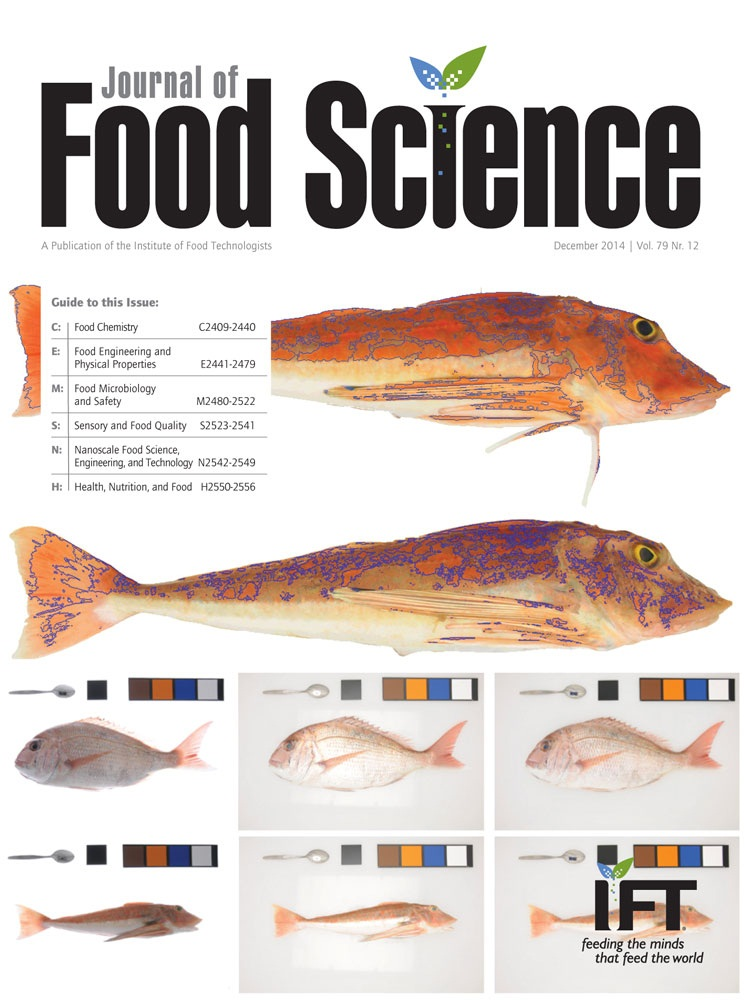Ver ítem
- xmlui.general.dspace_homeCentros e Institutos de InvestigaciónCIAP. Centro de Investigaciones AgropecuariasInstituto de Patología VegetalArtículos científicosxmlui.ArtifactBrowser.ItemViewer.trail
- Inicio
- Centros e Institutos de Investigación
- CIAP. Centro de Investigaciones Agropecuarias
- Instituto de Patología Vegetal
- Artículos científicos
- Ver ítem
Natural control of corn postharvest fungi Aspergillus flavus and Penicillium sp. using essential oils from plants grown in Argentina
Resumen
The objective in this study was to evaluate the antifungal activity of essential oils from native and commercial aromatic plants grown in Argentina against corn postharvest fungi and to link the essential oil bioactivity with lipid oxidation and morphological changes in fungus cell membrane. Essential oil (EO) of oregano variety Mendocino (OMen), Cordobes (OCor), and Compacto (OCom), mint variety Inglesa (Mi), and Pehaujo (Mp), Suico (Sui); rosemary (Ro),
[ver mas...]
The objective in this study was to evaluate the antifungal activity of essential oils from native and commercial aromatic plants grown in Argentina against corn postharvest fungi and to link the essential oil bioactivity with lipid oxidation and morphological changes in fungus cell membrane. Essential oil (EO) of oregano variety Mendocino (OMen), Cordobes (OCor), and Compacto (OCom), mint variety Inglesa (Mi), and Pehaujo (Mp), Suico (Sui); rosemary (Ro), and Aguaribay (Ag) were tested in vitro against 4 corn fungi: A. flavus (CCC116–83 and BXC01), P. oxalicum (083296), and P. minioluteum (BXC03). The minimum fungicidal concentration (MFC) and the minimum inhibitory concentration (MIC) were determined. The chemical profiles of the EOs were analyzed by GC‐MS. Lipid oxidation in cell membrane of fungi was determined by hydroperoxides and related with essential oil antifungal activity. The major compounds were Thymol in OCor (18.66%), Omen (12.18%), and OCom (9.44%); menthol in Mi and Mp; verbenone in Sui; dehydroxy‐isocalamendiol in Ag; and eucaliptol in Ro. OCor, Omen, and OCom showed the best antifungal activity. No antifungal activity was observed in Ag and Ro EO. The hydroperoxide value depended on the fungi (P < 0.001) and the antimicrobial agent (P < 0.001).Membrane lipids were oxidized by Sui EO in A. flavus BXC01 and A. flavus CCC116–83 (0.021 and 0.027 meqO2/kg, respectively). The results suggest that the EOs of OCor, OMen, OCom, Mi, Mp, and Sui grown in Argentina can be used as natural alternatives to control fungi that produce mycotoxin in maize.
[Cerrar]

Autor
Camiletti, Boris Xavier;
Asensio, Claudia Mariana;
Gimenez, Maria De La Paz;
Lucini, Enrique Iván;
Fuente
Journal of food science 79 (12) : M2499-M2506. (December 2014)
Fecha
2014-12
Editorial
Wiley; Institute of Food Technologists
ISSN
1750-3841 (Online)
Formato
pdf
Tipo de documento
artículo
Palabras Claves
Derechos de acceso
Restringido
 Excepto donde se diga explicitamente, este item se publica bajo la siguiente descripción: Creative Commons Attribution-NonCommercial-ShareAlike 2.5 Unported (CC BY-NC-SA 2.5)
Excepto donde se diga explicitamente, este item se publica bajo la siguiente descripción: Creative Commons Attribution-NonCommercial-ShareAlike 2.5 Unported (CC BY-NC-SA 2.5)

